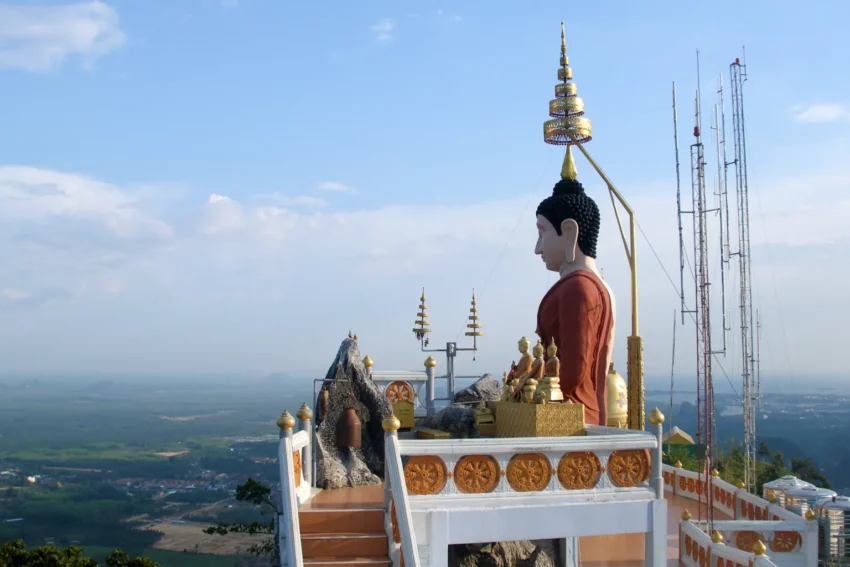Get your dose of History via Email
The Tiger Cave Temple: An Archaeological and Cultural Marvel
The Tiger Cave Temple, also known as Wat Tham Suea, is a cultural and archaeological site of significant interest found in the Krabi province of Thailand. This temple complex, with its imposing limestone cliff backdrop and extensive cave systems, offers a rich historical tapestry for researchers, archaeologists, and visitors alike. The temple grounds are marked by natural and man-made structures, including Buddhist temples, caves that once served as dwellings for monks, and the famous ‘footprint of the Buddha’— an integral part of the site’s veneration.
Historical Overview
According to the standing histories and local lore, the Tiger Cave Temple dates back to 1975, when a monk named Jumnean Seelasettho chose to meditate within the caves and subsequently established a meditation center. The naming of the temple arises from the tiger paw prints discovered in the cave and a legend of a large tiger that once lived and roamed the area. The site has now become one of Thailand’s most treasured religious sites, attracting a considerable number of pilgrims and tourists each year, seeking spiritual solace or historical insight, or the incredible panoramic views offered by the site’s natural elevation.
Archaeological Significance
The Tiger Cave Temple is an indispensable site for understanding the intersection of nature, culture, and religious practice. The numerous caves within the complex have yielded numerous artifacts, including tools, pottery fragments, and the molds for making Buddha images that suggest a history of human habitation dating back to the Stone Age. The cave, which is the temple’s namesake, houses what are believed to be the paw prints of tigers that lend credence to the tales surrounding the temple. Such discoveries underpin the site’s historical value and provide a window into the region’s ancient past.
Religious and Cultural Importance
Religiously, Wat Tham Suea is a Theravada Buddhist temple and is revered as a sacred site. The ‘footprint of the Buddha’ located within the temple complex is a focal point of pilgrimage, attracting devotees who associate it with spiritual enlightenment and merit-making. The temple complex is also home to a grand statue of the Buddha, where the faithful gather to offer prayers and find spiritual comfort. These elements underscore Tiger Cave Temple’s enduring importance in the fabric of Thai Buddhism.
The Natural Splendor and the Staircase
The temple complex is not only a testament to spiritual reverence but also a standing monument to natural beauty. The site’s positioning at the base of a sheer limestone cliff provides a majestic setting that enhances its spiritual atmosphere. It is perhaps best known for the strenuous climb involving a staircase of 1,237 steps that leads to the summit. This climb, while physically demanding, culminates in unmatched panoramic views of the surrounding countryside, the Andaman Sea, and stunning limestone karst formations.
The Tiger Cave Temple Today
In contemporary times, the Tiger Cave Temple continues to serve as an active meditation site. Monks and nuns reside within the complex, continuing the tradition of seeking enlightenment and inner peace through meditation in the temple’s serene environment. The temple’s significance is recognized and preserved through various conservation efforts that aim to maintain the site’s integrity and the natural landscape that surrounds it. This ensures that the Tiger Cave Temple remains a site of historical, cultural, and religious significance for future generations.
In summation, Wat Tham Suea or Tiger Cave Temple offers a remarkable confluence of natural beauty, archaeological wealth, and spiritual depth. It is a unique site that continues to captivate all who visit it, echoing with the footsteps of ancient history and the prayers of the present.

